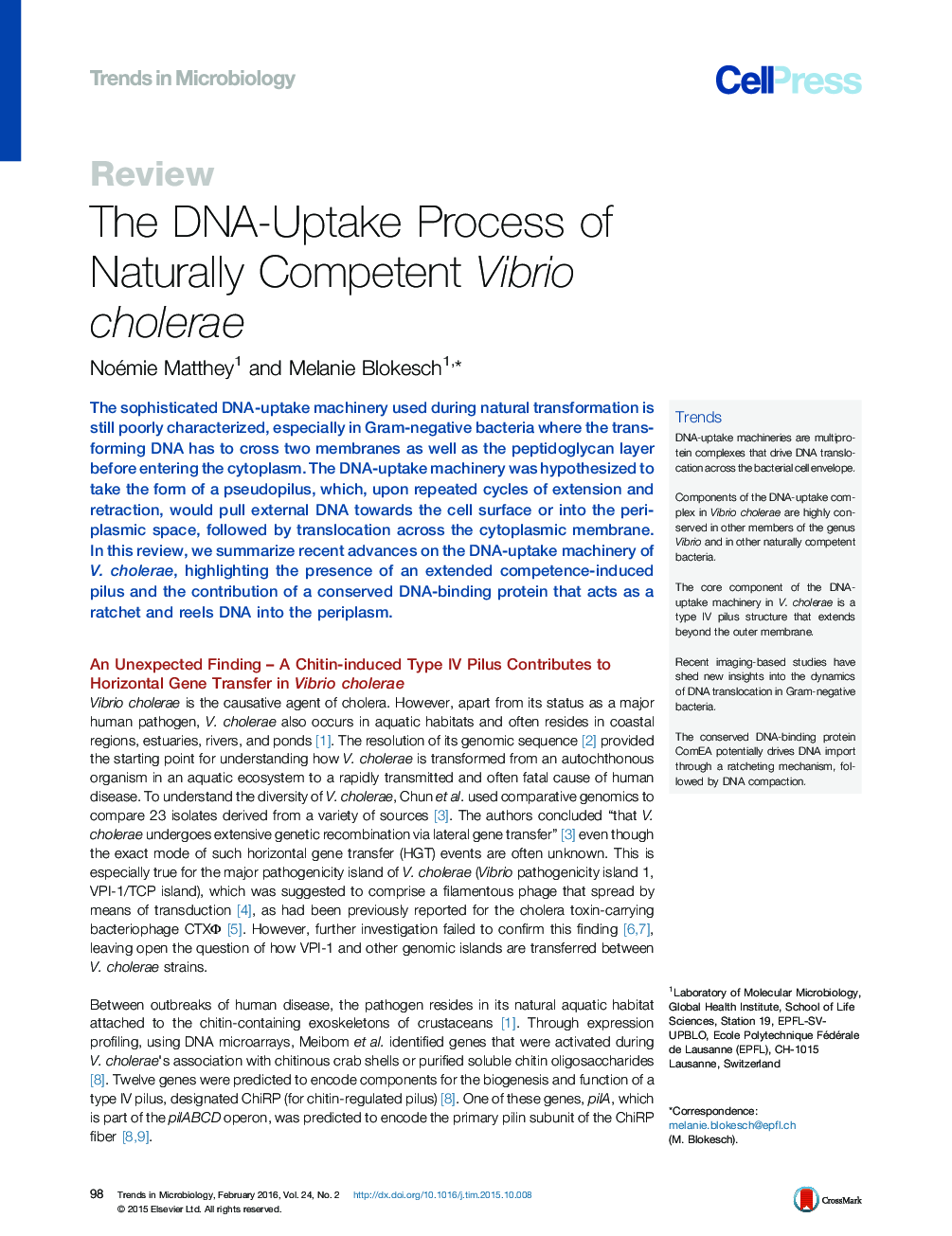| Article ID | Journal | Published Year | Pages | File Type |
|---|---|---|---|---|
| 3421911 | Trends in Microbiology | 2016 | 13 Pages |
The sophisticated DNA-uptake machinery used during natural transformation is still poorly characterized, especially in Gram-negative bacteria where the transforming DNA has to cross two membranes as well as the peptidoglycan layer before entering the cytoplasm. The DNA-uptake machinery was hypothesized to take the form of a pseudopilus, which, upon repeated cycles of extension and retraction, would pull external DNA towards the cell surface or into the periplasmic space, followed by translocation across the cytoplasmic membrane. In this review, we summarize recent advances on the DNA-uptake machinery of V. cholerae, highlighting the presence of an extended competence-induced pilus and the contribution of a conserved DNA-binding protein that acts as a ratchet and reels DNA into the periplasm.
TrendsDNA-uptake machineries are multiprotein complexes that drive DNA translocation across the bacterial cell envelope.Components of the DNA-uptake complex in Vibrio cholerae are highly conserved in other members of the genus Vibrio and in other naturally competent bacteria.The core component of the DNA-uptake machinery in V. cholerae is a type IV pilus structure that extends beyond the outer membrane.Recent imaging-based studies have shed new insights into the dynamics of DNA translocation in Gram-negative bacteria.The conserved DNA-binding protein ComEA potentially drives DNA import through a ratcheting mechanism, followed by DNA compaction.
